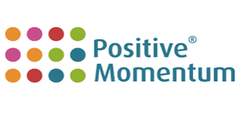


Moderator: Roderic Rennison, Rennison Consulting
Expert: Matt Crabtree, Positive Momentum
Overview
With margins continually being squeezed, it is not surprising that CEOs seek to get the most out of their sales forces. However the successful optimisation of any team will depend on the ability to not only free them from administrative tasks through cost-effective use of technology, but also through the concerted effort to obtain good management information about the clients.
The session led by Matt Crabtree of Positive Momentum considered how you build and structure teams to optimise results as well as considering training and motivation of front line staff to meet client needs.
Opening Comments
Just because you can measure something, it does not mean that you should.
There are a number of pre-requisites to maximising productivity:
- Get buy-in from the workforce as a whole
- Don’t let finance control the process
- Implementation of MI is based on its usability; therefore get engagement from first/front line management
There are three measures that matter:
- Activity – a “quantity of quality”
- Conversion – effort versus success (It is not pipeline conversion)
- Average order/deal value
Key themes
The importance of leadership
Effective leadership drives adoption.
Getting advisers to adopt change is challenging and there are some important aspects to get right:
- Positioning the change in a way that those affected like it. “The change we like is the change we chose”.
- Making the change(s) intuitive. They should feel natural rather than appearing challenging to put into effect.
- Involving those who are affected by the change in the process.
It is important to involve those people who will be involved in putting the change into effect. Get the people who will use the system to design it.
Change is best implemented by influencing people not imposing change without consultation. It’s therefore important to pay attention in a financial planning context, to what advisers want.
It is also important to avoid being dogmatic about the change process; what’s important is that the objectives of the change process are met.
Ensuring the right level of support for advisers
The appropriate level of support for advisers will depend on the type of financial planning firm, and the types of clients that they are advising and servicing. It’s important therefore to be clear on whether more support is required at the “front” or at the “back” of the model.
It is also important to ensure that advisers whilst able to provide input to helping ensure processes are optimised, are not able to dictate or hinder the desired change occurring.
Having a CRM system that works for the business
There are frequent debates about whether it is best to buy-in and implement a CRM system or to build it in-house. The needs of the business affecting the change are paramount; there is a balance to be struck between buying in a system or software that may be too complex or over-engineered and so the business does not get adoption and/or buy-in and therefore value, or alternatively building the processes in-house. This latter option brings with it the need to maintain and adapt the software and thus having potentially heavy and unknown ongoing costs.
Conclusions
At all times, it is paramount to think about the impact of processes and system changes from a client perspective rather than only from an adviser and support staff viewpoint. This translates into the need to understand different client segments and demographics. For example, if the client base is young and in the accumulation phase, they are likely to be more “tech” savvy and will be more likely to adopt apps and tools than those of say retirement age. Conversely those who are retired are, on average, likely to have more time.
Therefore, to achieve improved productivity, the need to know and understand the needs of those in the business be they advisers or other members of the team, also needs to be balanced with the needs of the clients.


